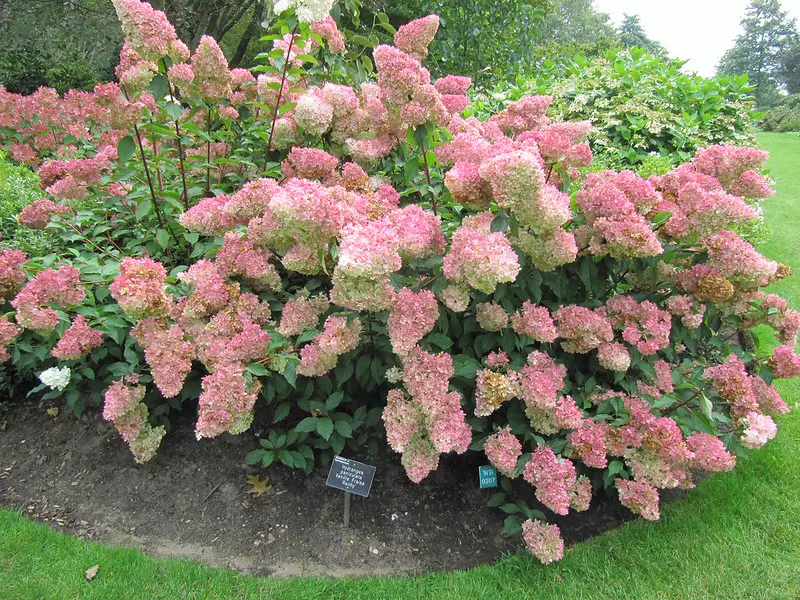
The Ultimate Guide to Hydrangea peniculata (Panicle Hydrangea)
A complete guide to Hydrangea peniculata, including planting, pruning, soil adjustments, eco-friendly pest management, propagation, and garden design ideas.
Read MoreHydrangea paniculata 'Vanille Fraise', also known as 'Vanilla Strawberry', is a deciduous shrub renowned for its large, conical flower panicles. These blooms emerge creamy white in mid-summer, gradually transitioning to soft pink and deepening to a rich strawberry red as the season progresses. The plant typically reaches a height of 1.5 to 2.5 metres and a spread of 1 to 1.5 metres, forming an upright, bushy habit with dark green, ovate leaves.
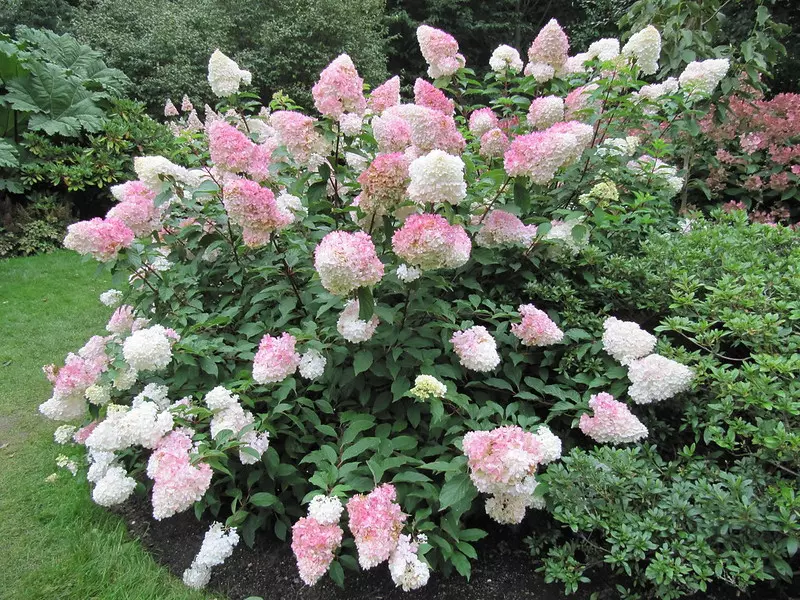
This hydrangea variety is ideal for gardeners seeking a low-maintenance yet visually striking addition to their landscape. Its dynamic colour changes provide extended seasonal interest, making it suitable for those who appreciate evolving garden aesthetics. Additionally, 'Vanille Fraise' attracts pollinators such as bees and butterflies, appealing to gardeners aiming to support local wildlife.
'Vanille Fraise' thrives in various garden environments, including:
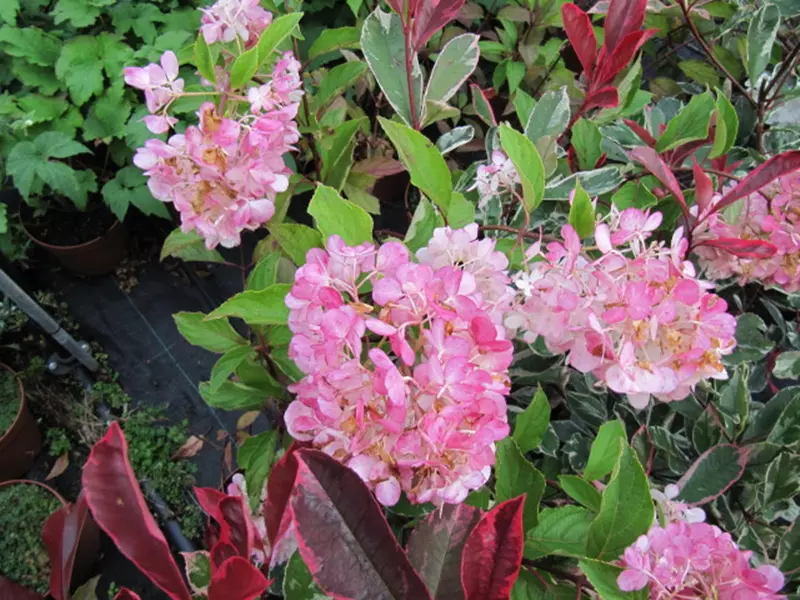
Hydrangea paniculata 'Vanille Fraise' offers a captivating addition to gardens, with its evolving bloom colours and extended flowering period. Ideal for various garden styles and climates, it provides both aesthetic beauty and ecological benefits. However, prospective growers should consider its care requirements and potential drawbacks to ensure it aligns with their gardening goals.
For the best results, plant 'Vanille Fraise' in early spring or autumn. These periods offer moderate temperatures and sufficient rainfall, promoting robust root development before the extremes of summer or winter.
Choose a location that receives full sun to partial shade. While 'Vanille Fraise' can tolerate various light conditions, ample sunlight encourages more prolific flowering. Ensure the site has well-draining, fertile soil to prevent root rot and other moisture-related issues.
Amend the planting area with organic matter, such as compost or well-rotted manure, to enhance soil fertility and drainage. Aim for a slightly acidic to neutral pH, as hydrangeas prefer these conditions for optimal growth.
Before planting, it's crucial to thoroughly hydrate the root ball. Submerge the potted hydrangea, container and all, into a bucket filled with water. Hold it underwater until air bubbles cease to rise, indicating that the root ball is fully saturated. This process, which typically takes 1–2 minutes, ensures the plant is well-hydrated and reduces transplant shock.
Apply a 5–7.5 cm layer of organic mulch, such as wood chips or bark, around the base of the plant. Mulching helps retain soil moisture, regulate temperature, and suppress weed growth. Ensure the mulch is kept a few centimetres away from the stem to prevent rot.
Maintain consistent soil moisture, especially during the first growing season, to support root establishment. Water deeply and regularly, adjusting based on rainfall and temperature. Monitor the plant for signs of stress, such as wilting or yellowing leaves, and address issues promptly.
By following these detailed planting steps, you can ensure that your Hydrangea paniculata 'Vanille Fraise' establishes successfully and thrives, providing your garden with its signature, seasonally changing blooms.
'Vanille Fraise' performs best in full sun to partial shade. Ideally, it should receive at least six hours of sunlight daily for optimal blooming. In regions with hot summer climates, providing afternoon shade can help prevent leaf scorch and maintain flower quality.
This hydrangea prefers well-drained, fertile soils. Incorporating organic matter, such as compost, can enhance soil structure and fertility. While 'Vanille Fraise' is adaptable to various soil types, it thrives in slightly acidic to neutral pH levels. Unlike some hydrangea species, the flower colour of 'Vanille Fraise' is not affected by soil pH.
Maintaining consistent soil moisture is crucial, especially during dry spells. Water deeply and regularly to keep the soil moist but not waterlogged, as overwatering can lead to root rot. Applying a layer of mulch around the base helps retain moisture and regulate soil temperature.
In early spring, as new growth begins, apply a balanced fertiliser, such as a 10-10-10 formulation, to support healthy development and prolific blooming. A second application in mid-summer can further enhance flowering. Avoid excessive fertilisation, as it may promote foliage growth at the expense of blooms.
'Vanille Fraise' blooms on new wood, making late winter or early spring the ideal time for pruning. Cutting back the previous year's growth to about 30–45 cm encourages vigorous new shoots and larger flower clusters. Regular pruning also helps maintain the shrub's shape and size.
This variety is hardy in USDA zones 3–8, tolerating cold climates well. However, in areas with severe winters, applying a thick layer of mulch around the base can protect the roots from freezing temperatures.
While generally resilient, 'Vanille Fraise' can be susceptible to pests like aphids and spider mites, as well as diseases such as powdery mildew and leaf spot. Regular monitoring, proper spacing for air circulation, and maintaining plant health through appropriate watering and fertilisation can mitigate these issues.
By adhering to these care guidelines, gardeners can enjoy the captivating beauty of Hydrangea paniculata 'Vanille Fraise' throughout the growing season. Its dynamic blooms and robust nature make it a valuable addition to diverse garden settings.
Contrary to some beliefs, 'Vanille Fraise' should be pruned exclusively in spring, after the last frosts have passed, typically around March. Avoid autumn pruning to prevent potential frost damage, as unpruned branches can protect the plant during winter.
When pruning, be thorough. It's advisable to cut back the plant by up to three-quarters of its size. This encourages vigorous new growth and results in larger, more prolific blooms.
Delaying pruning until spring benefits overwintering insects that may reside in the old flower heads. Additionally, the dried blooms add winter interest to the garden.
By adhering to these pruning guidelines, you can ensure that your 'Vanille Fraise' hydrangea remains healthy and produces abundant, vibrant blooms each season.
When choosing companion plants for 'Vanille Fraise', consider the following factors:
The following plants complement 'Vanille Fraise' hydrangeas in both aesthetics and cultural requirements:
Certain plants are incompatible with hydrangeas due to differing cultural requirements:
To create a cohesive and visually appealing garden design:
Thoughtfully chosen companion plants can elevate the beauty of Hydrangea paniculata 'Vanille Fraise' and contribute to a thriving, harmonious garden landscape.
'Vanille Fraise' thrives in moist, well-drained, and fertile soils. Incorporating organic matter such as compost or well-decayed manure can enhance soil fertility and structure, promoting healthy root development.
This hydrangea variety prefers slightly acidic to neutral soils, with an ideal pH range between 5.5 and 7.0. Maintaining this pH range ensures efficient nutrient uptake, leading to robust growth and prolific blooming.
While 'Vanille Fraise' enjoys consistent moisture, it's crucial to avoid waterlogged conditions, which can lead to root rot. Ensuring the soil is well-drained will help maintain the necessary balance between moisture retention and drainage.
Incorporating organic materials such as leaf mould, humus, sand, and peat can improve soil texture and fertility. However, avoid soils with high lime content, as 'Vanille Fraise' does not thrive in alkaline conditions.
Applying a layer of mulch around the base helps retain soil moisture, regulate temperature, and suppress weeds. Organic mulches like bark chips or compost are beneficial and decompose over time, enriching the soil.
By providing 'Vanille Fraise' with moist, well-drained, fertile, and slightly acidic soil, gardeners can enjoy its spectacular floral display throughout the growing season.
'Vanille Fraise' thrives in full sun to partial shade conditions. For the best flowering performance, it should receive at least six hours of direct sunlight daily. However, in regions with intense summer heat, providing some afternoon shade can prevent leaf scorch and maintain flower quality.
In cooler climates, 'Vanille Fraise' can tolerate full sun exposure throughout the day. Conversely, in warmer areas, especially those with hot afternoons, it's advisable to plant this hydrangea where it can receive morning sun and afternoon shade to protect it from excessive heat stress.
Monitoring the plant for signs of stress can help determine if it's receiving appropriate sunlight:
To ensure 'Vanille Fraise' receives optimal sunlight:
Providing appropriate sunlight exposure is essential for the health and beauty of Hydrangea paniculata 'Vanille Fraise'. Tailoring its placement based on regional climate conditions will promote vigorous growth and a spectacular floral display.
For optimal growth, 'Vanille Fraise' requires consistent moisture, especially during its active growing season. Watering every 2-3 days is recommended, adjusting based on temperature and humidity levels.
Maintaining consistent soil moisture is crucial. Applying a layer of mulch around the base of the plant helps retain moisture, regulate soil temperature, and suppress weeds. Organic mulches like bark chips or compost are beneficial as they decompose over time, enriching the soil.
Regularly monitor soil moisture and adjust watering practices accordingly to prevent these issues.
By adhering to a consistent and seasonally adjusted watering schedule, gardeners can ensure that Hydrangea paniculata 'Vanille Fraise' remains healthy and produces its characteristic vibrant blooms throughout the growing season.
Utilising organic fertilisers enhances soil health by improving its structure, increasing microbial activity, and providing a slow-release source of nutrients. This approach fosters sustainable plant growth and reduces the risk of nutrient leaching into groundwater.
For optimal results, apply organic fertilisers in early spring as new growth emerges. A second application can be made in mid-summer to support continued blooming. Avoid late-season fertilisation, as it may encourage tender growth susceptible to frost damage.
Applying a 2-3 inch layer of organic mulch, such as shredded bark or leaf mould, around the base of 'Vanille Fraise' helps conserve moisture, regulate soil temperature, and suppress weeds. As the mulch decomposes, it adds valuable organic matter to the soil.
Conducting a soil test before fertilisation provides insight into nutrient levels and pH balance, allowing for tailored amendments. 'Vanille Fraise' prefers slightly acidic to neutral soils (pH 5.5-7.0). Adjusting soil pH with organic materials like elemental sulphur or lime can optimise nutrient availability.
Implementing organic fertilisation practices for Hydrangea paniculata 'Vanille Fraise' not only enhances its growth and flowering but also contributes to a healthier garden ecosystem. By choosing natural amendments, gardeners can enjoy the beauty of this hydrangea while promoting environmental sustainability.
Several pests can affect 'Vanille Fraise', including:
'Vanille Fraise' may be affected by several diseases, such as:
To minimise the risk of pest infestations and disease development:
By staying vigilant and implementing proper cultural practices, gardeners can effectively manage and prevent the common pests and diseases that affect Hydrangea paniculata 'Vanille Fraise', ensuring a healthy and beautiful display.
'Vanille Fraise' is hardy in most parts of the UK, tolerating temperatures down to -15°C. However, young plants and those in exposed locations may benefit from additional protection during severe winters.
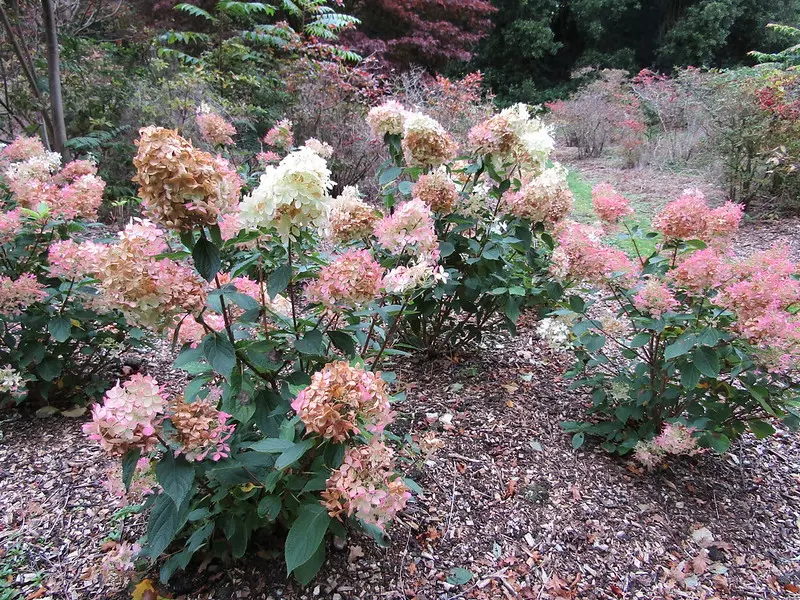
Applying a thick layer of organic mulch, such as compost or well-rotted manure, around the base of the plant in late autumn helps insulate the roots and maintain soil moisture. This practice also enriches the soil as the mulch decomposes.
To safeguard the stems and buds from frost damage:
Continue to water 'Vanille Fraise' during dry spells in autumn to ensure the plant enters dormancy well-hydrated. Once the ground freezes, reduce watering, as excessive moisture can lead to root rot.
Hydrangeas grown in containers are more susceptible to cold damage due to exposed roots. To protect them:
Avoid heavy pruning in autumn, as it can stimulate new growth susceptible to frost damage. Instead, perform major pruning in late winter or early spring, just before new growth begins.
By implementing these winter protection strategies, gardeners can ensure that Hydrangea paniculata 'Vanille Fraise' remains healthy and poised for a spectacular display in the coming growing season.
Hydrangea paniculata 'Vanille Fraise' is a stunning, low-maintenance shrub that offers dynamic seasonal interest. With proper planting, care, and attention to its needs, this hydrangea variety can become a highlight in any garden, whether as a focal point or part of a diverse planting scheme.

A complete guide to Hydrangea peniculata, including planting, pruning, soil adjustments, eco-friendly pest management, propagation, and garden design ideas.
Read More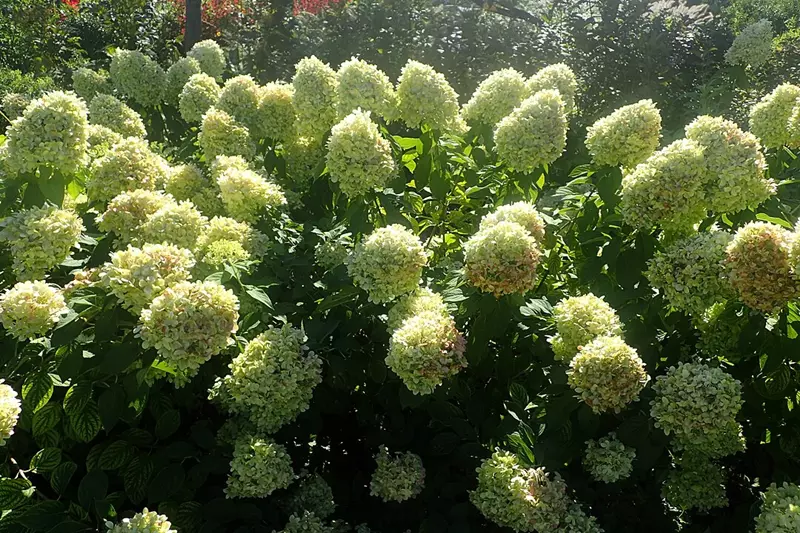
Discover how to grow and care for Hydrangea paniculata 'Limelight'. Learn about planting, maintenance, pruning, and the stunning beauty of this versatile shrub.
Read More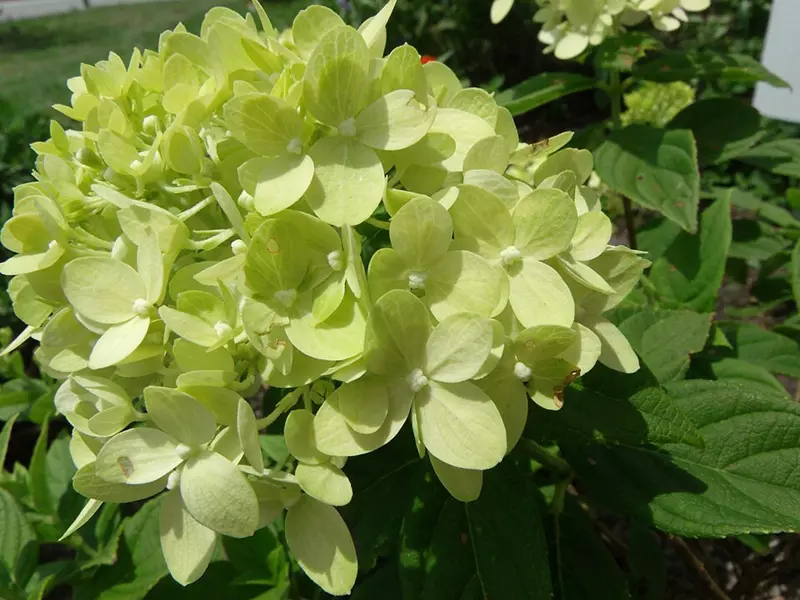
Discover the top 10 Hydrangea paniculata varieties popular in the UK. These stunning plants are ideal for gardens of all sizes and styles.
Read More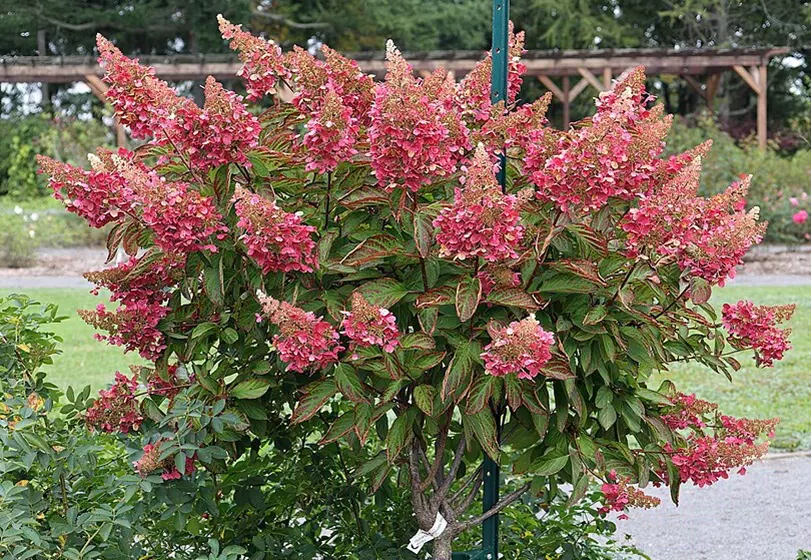
Discover the beauty and care tips for Hydrangea paniculata 'Pinky Winky'. Learn how to grow, prune, and use this stunning shrub in your garden.
Read More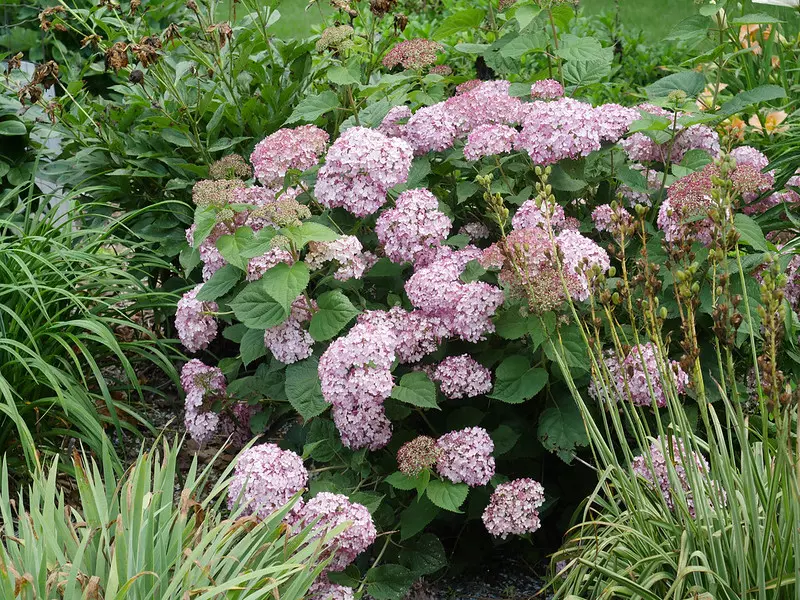
Discover what to plant with hydrangeas to create a thriving and visually stunning garden. Learn about the best companion plants and their benefits.
Read More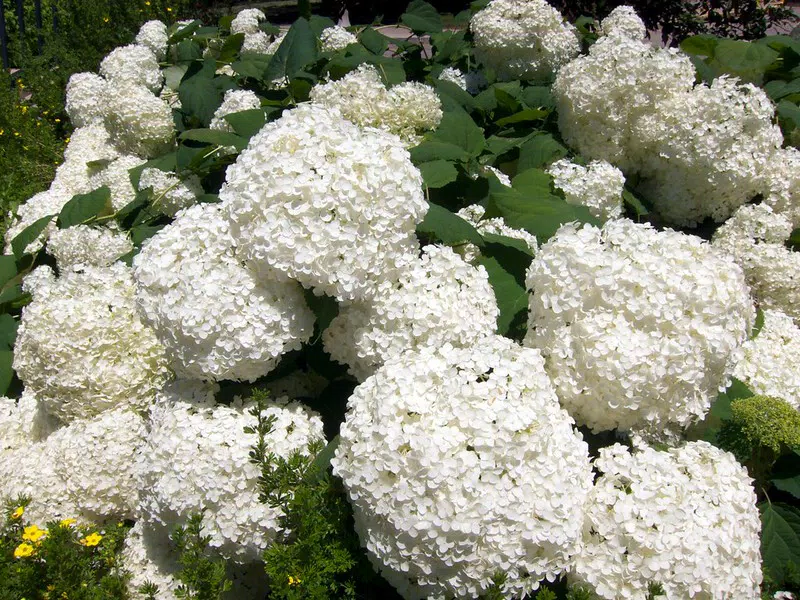
Discover the top 10 most popular hydrangea varieties in the UK, their unique characteristics, and tips for incorporating them into your garden.
Read More